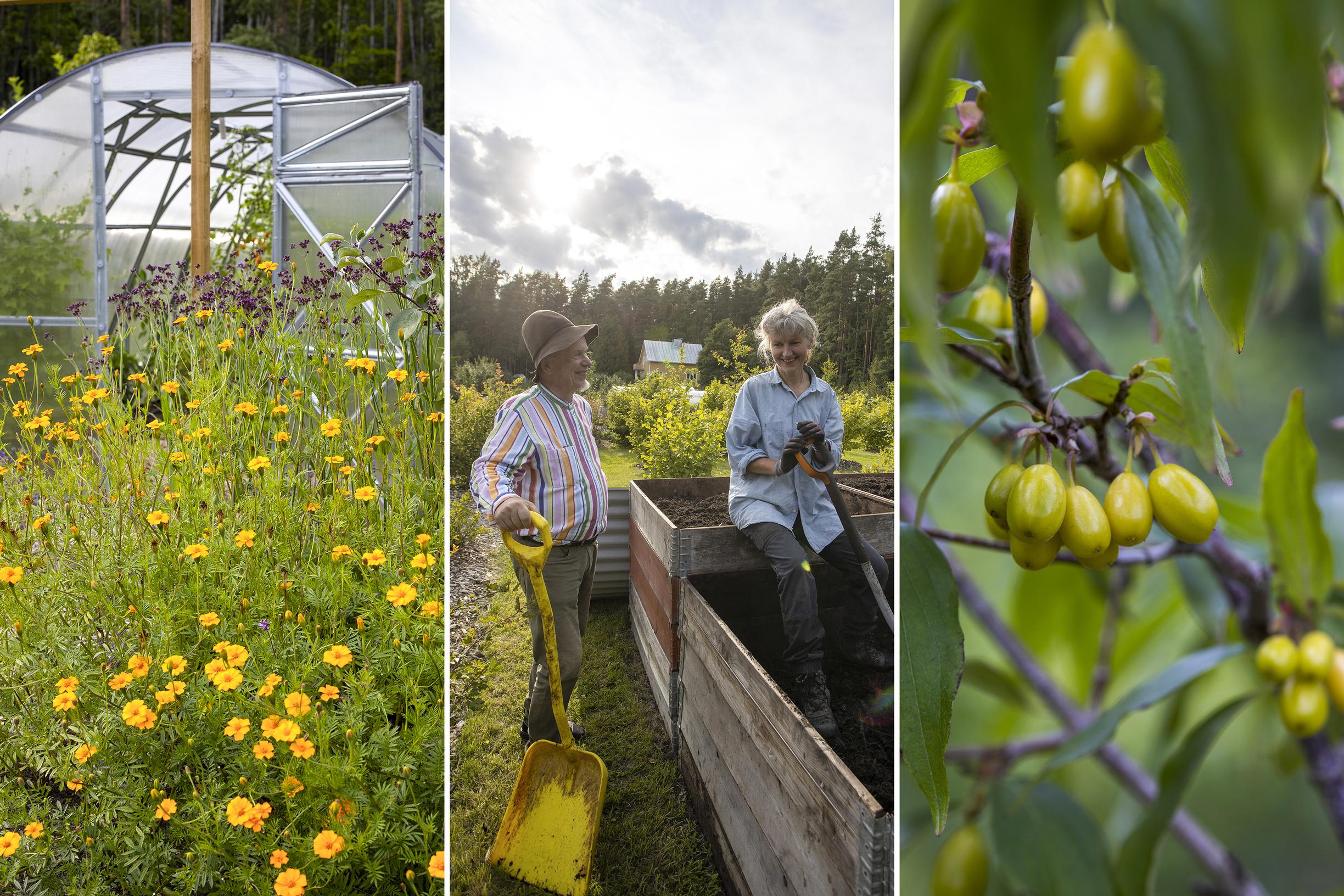
Truffles, apricots, and unusual berries: explore Outi and Nalle’s no-dig garden of 500 different edible plants and a remarkable compost
At Tallbacka trädgård garden in Parainen, Finland, you can discover unusual edible plants and the secrets of no-dig cultivation.
A tour of Tallbacka Trädgård always begins at the garden’s most important spot: the compost frames made from stacked pallet collars.
The owners leading the guided tour are Outi and Björn “Nalle” Öhman, who have noticed that composting and soil care spark a lot of interest. Many people have practical questions about how to care for both sandy and clayey soil.
“No matter what kind of soil you have, just add compost on top and it works. The soil won’t become crusted over,” Nalle says.
“Compost, compost, and more compost—that’s the heart of all soil care,” Outi adds.
Let’s come back to composting later and continue our tour of the grounds.
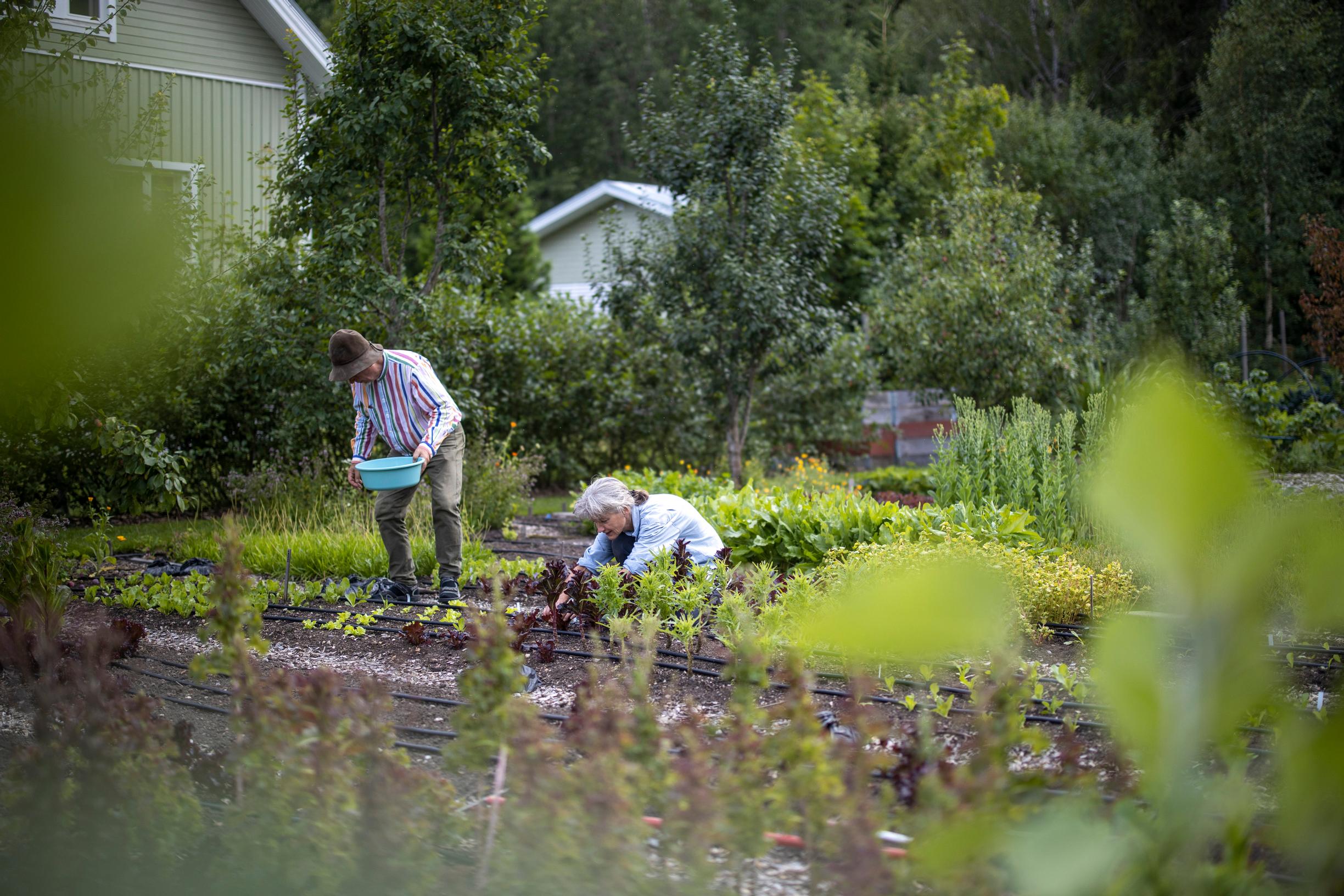
It’s now the eighth season for this Parainen-based garden and the fourth summer operating as a visitor-friendly site, open by appointment to both groups and individuals alike.
In eight years, the once-overgrown field and the yard around the 1950s house have been transformed into a demonstration garden where about 500 different edible plants grow each year, from berries and herbs to perennial vegetables, perennials, and specialty fruits. Nearly everything inside the garden fence is edible.
“We have a strong desire for unusual and ancient plants so visitors will have plenty to see. The more peculiar edible species we find, the happier we are,” Outi says.
“It’s wonderful to see a companion who was half-forced to come along on the garden visit become excited about the plants, too,” Nalle says with a grin.
“We have a strong desire for unusual and ancient plants.”
In the early days of the garden, the couple was especially interested in unusual and unfamiliar berries and fruits. That’s how plants like silverberry, green-, yellow-, and red-berried cornelian cherries, white mulberry, apricots, nuts, jostaberry, and fourberry found their way here.
“We ended up with far too many berry bushes, and we would never have picked them all. That’s when we remembered truffle cultivation,” Outi says.
Seven years ago, they planted hazelnut bushes and English oaks whose roots were inoculated with truffle fungus. The first truffles are expected this fall.
In the more than 7,000-square-meter (1.7-acre) garden, there is also an interesting variety of apples, pears, grapevines, raspberries, cherries, plums, currants, honeyberries, and gooseberries.
“Our idea was that people visiting could sample the berries. For instance, different blackcurrant varieties taste quite distinct,” Nalle explains.
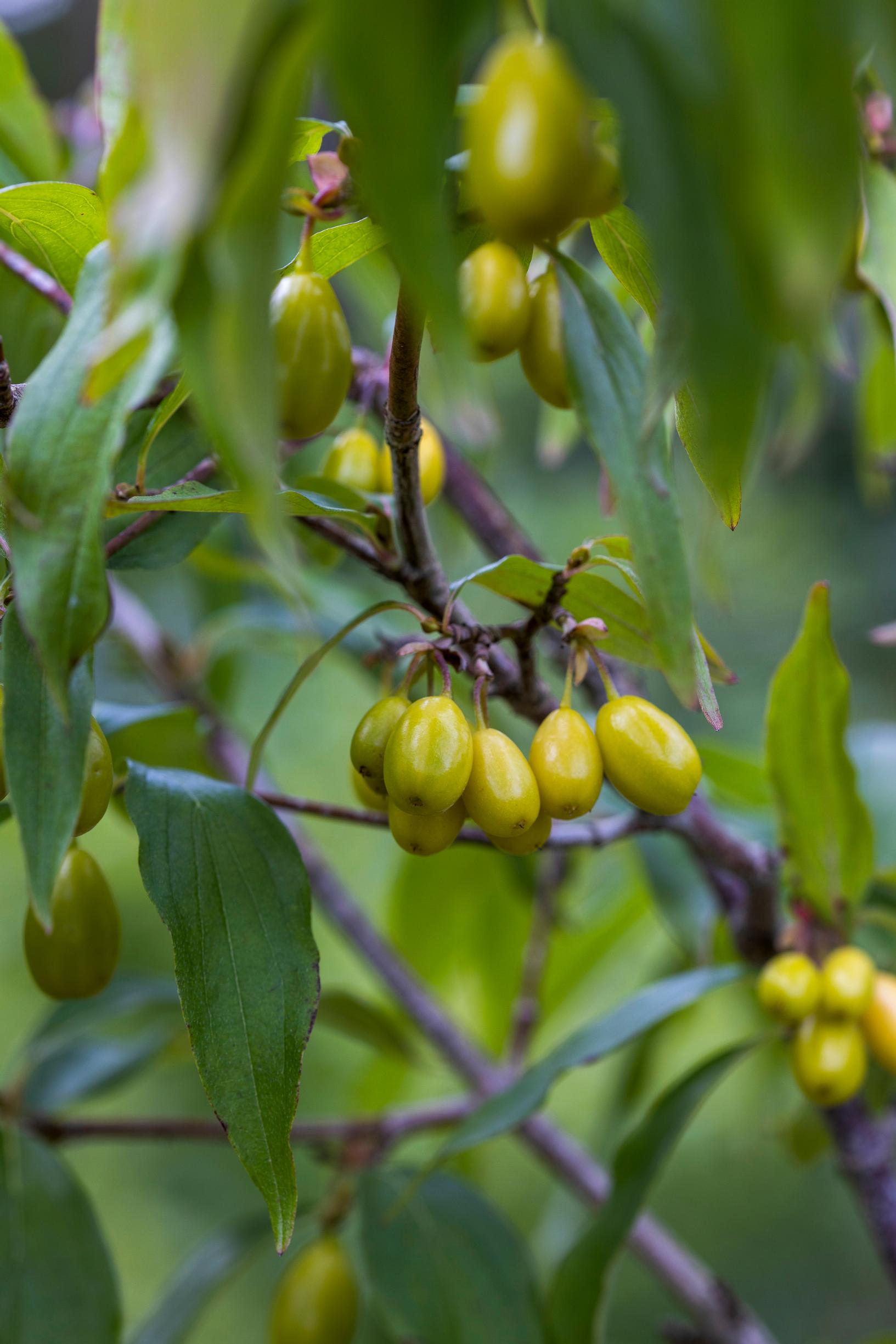
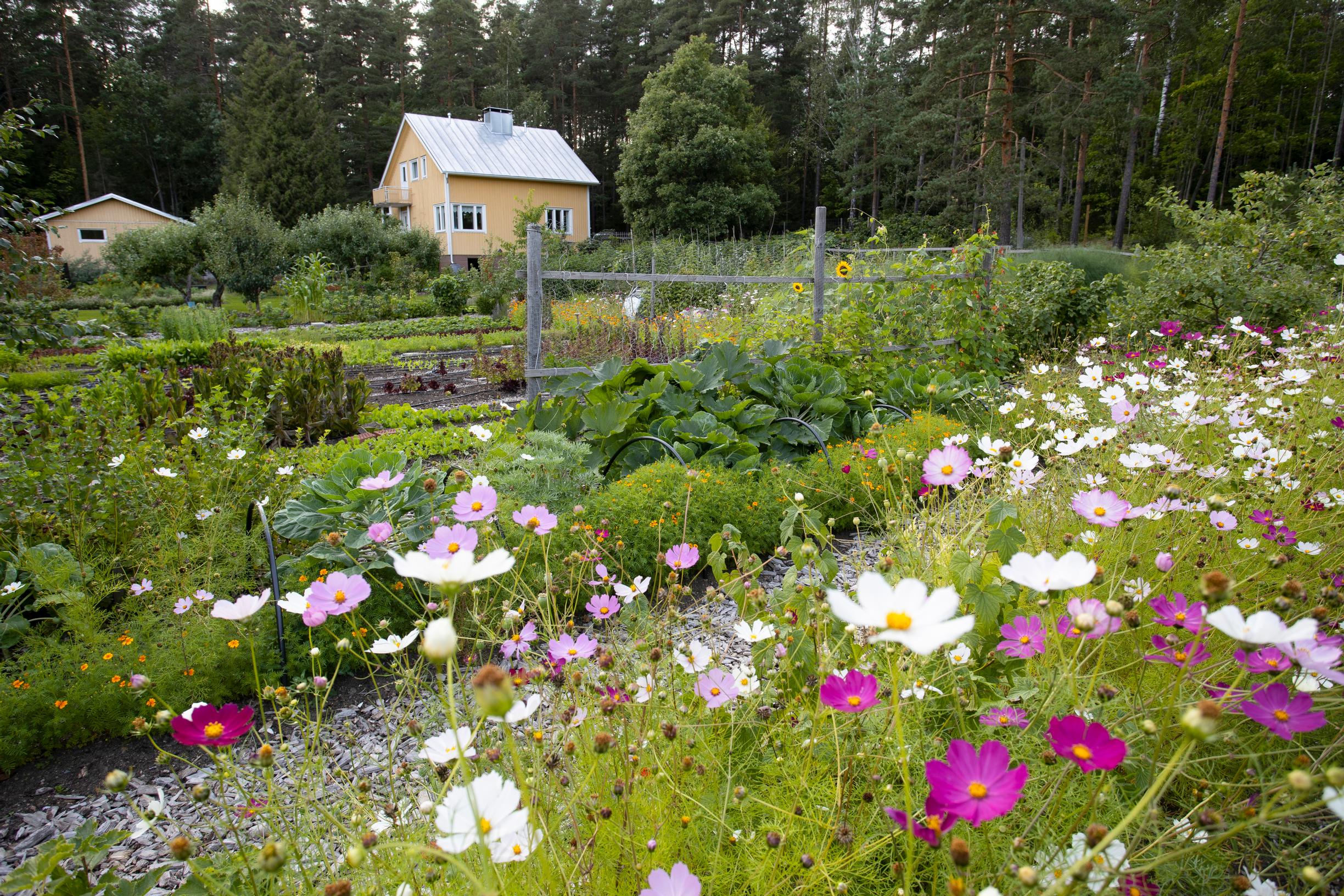
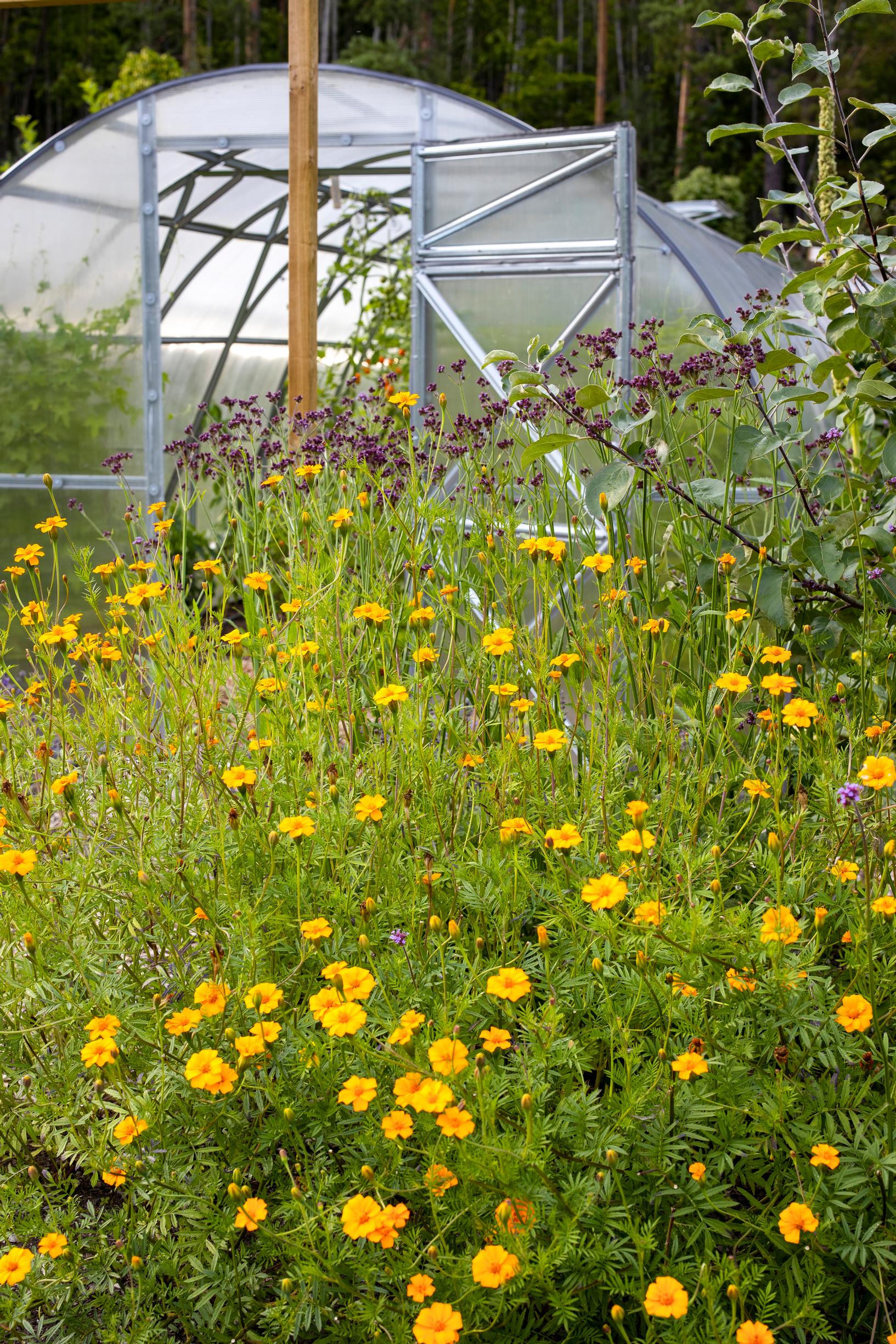
All the edible plants are grown mostly for the couple’s own use: for cooking and preserving. For instance, Nalle makes marmalade from true quince.
“We pick berries just for our own enjoyment.”
Outi tends the garden alongside her day job, while Nalle is retired. Because of time constraints, they have chosen to focus on perennial species. There are dozens of leafy vegetable varieties here, such as spinach dock, pea vetch, sea kale, and sea beet.
“This buckler sorrel has a truly fine taste and is highly valued in French cuisine,” Outi says, pointing to the plant’s small, spear-like leaves.
Others in this group include orache with its tangy leaves, and white campion with its nodding white flowers. They have planted 28 varieties of hosta as an edible crop, and have also added more asparagus in recent years.
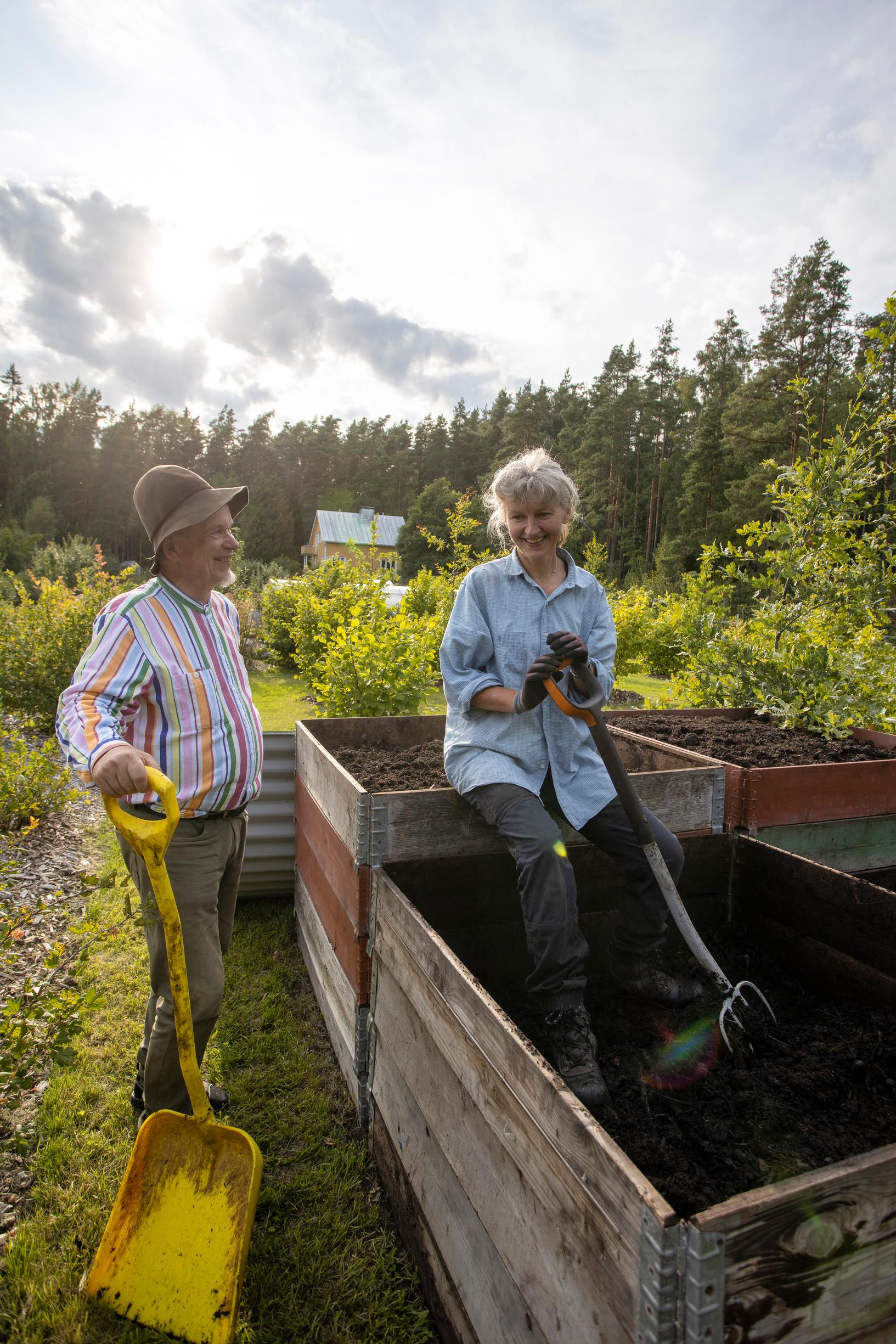
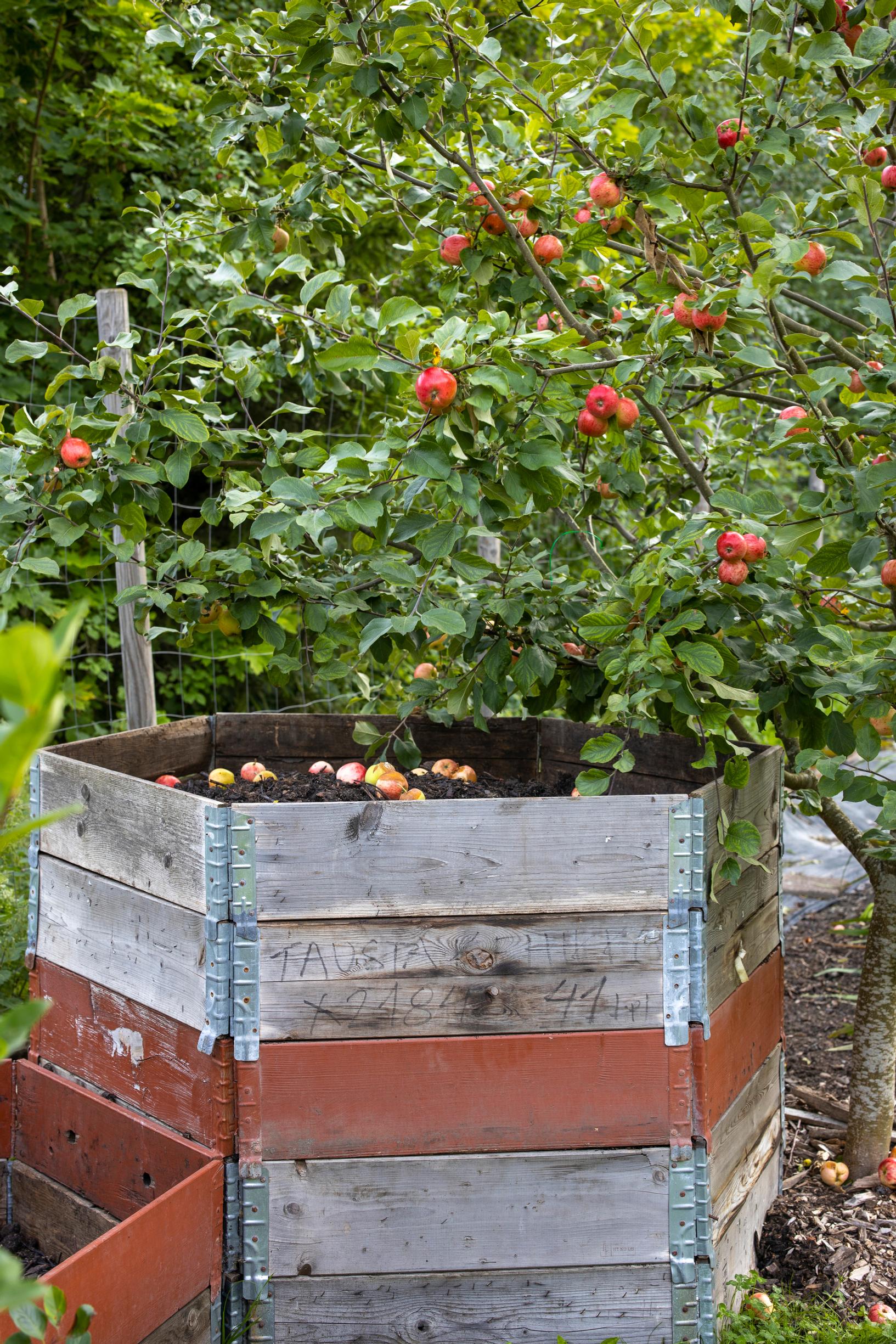
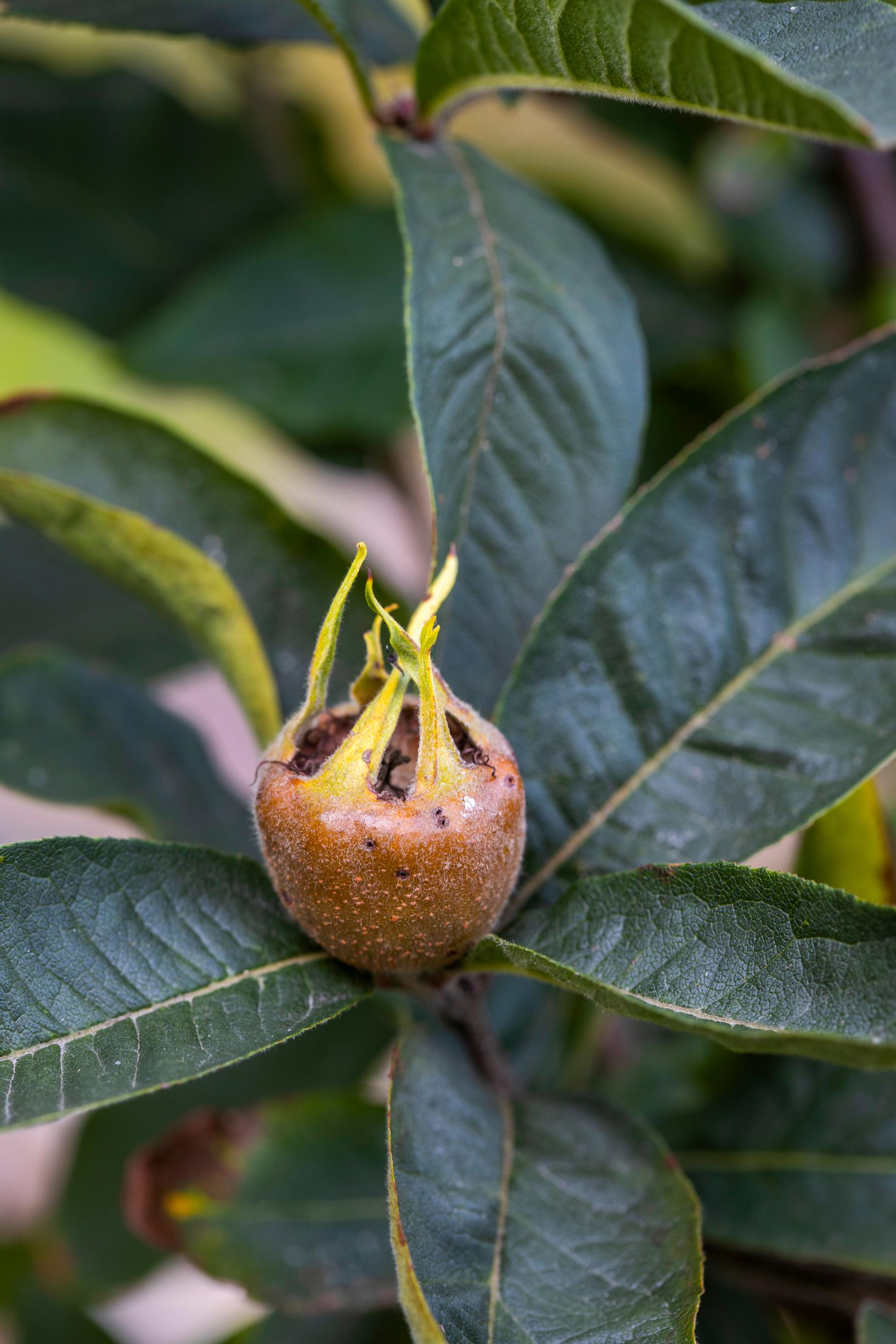
With special enthusiasm the couple speaks about Charles Dowding’s no-dig cultivation method. The British gardener and nonfiction writer’s teachings came in handy in the early years, when Outi and Nalle struggled with weeds and dry conditions.
“Part of the soil was strong, black, and soft, but part was sandy and didn’t hold water well,” Outi says.
In no-dig growing, you lay down 15 centimeters (6 in) of compost when creating a new bed. After that, 5–8 centimeters (2–3 in) of compost are added annually. This increases organic matter, carbon sequestration, and mycorrhizal fungi, while reducing the need for watering and weeding. It also makes it easier to restore the beds.
“You don’t have to turn the soil, fertilize, or do much weeding,” Outi says, noting that she’s seen the soil and plants improve year after year.
“The biggest challenge in no-dig cultivation has been making compost.”
The biggest challenge in no dig cultivation has been making enough compost for the large garden, as it consumes cubic meters of it. The Öhmans have also adopted the so-called Berkeley Hot Compost method, in which horse manure, shredded branches, and garden debris are turned frequently to speed up decomposition.
“When we’ve gathered the materials, we start turning the compost five days later and then every two days: what’s in the middle goes to the edges and vice versa. The pallet-collar frames make the job noticeably easier.”
Because of the turning, the temperature in the pile rises to between 55 and 70 degrees Celsius (131–158°F), which destroys weed seeds in a week or two.
Charles Dowding’s method is based on a three-section compost frame. You fill one section at a time until the pile is about 170 centimeters (67 in) high and no longer settling. Then you leave it for a couple of months, while you build a new pile in the second section. After that, you turn the contents of the first section into the empty third section, where it matures further.
“You can apply the compost soil as mulch after a few months.”
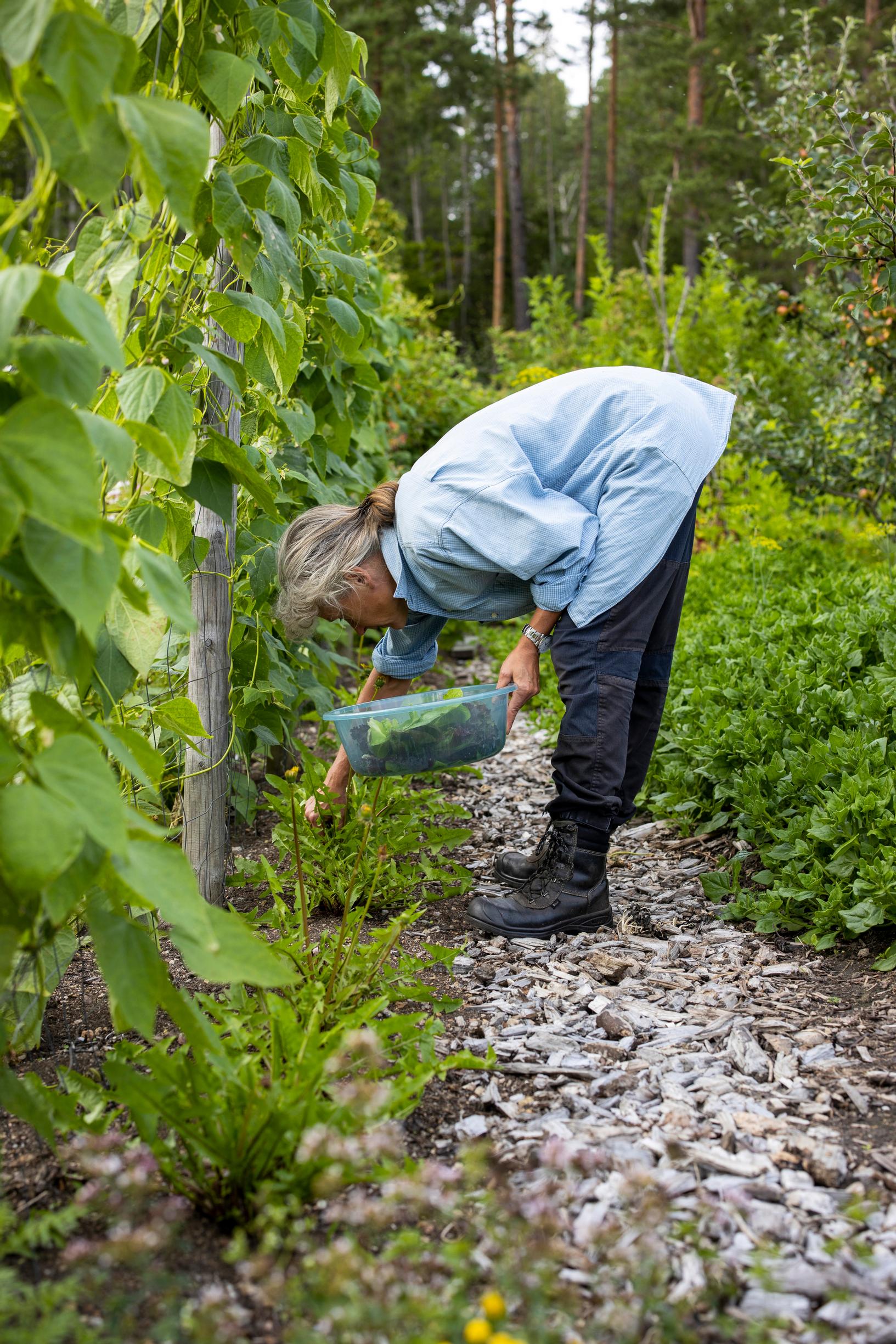
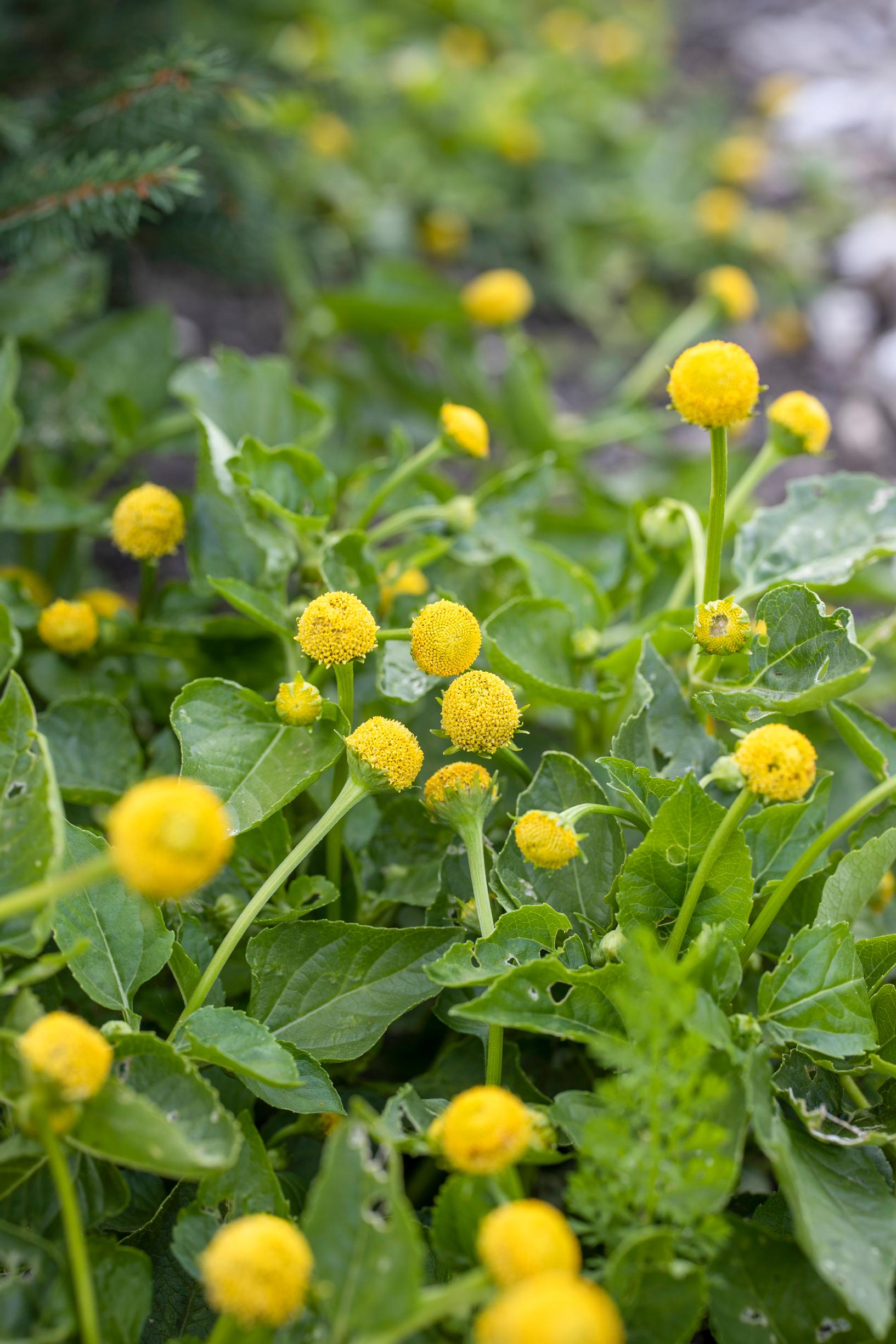
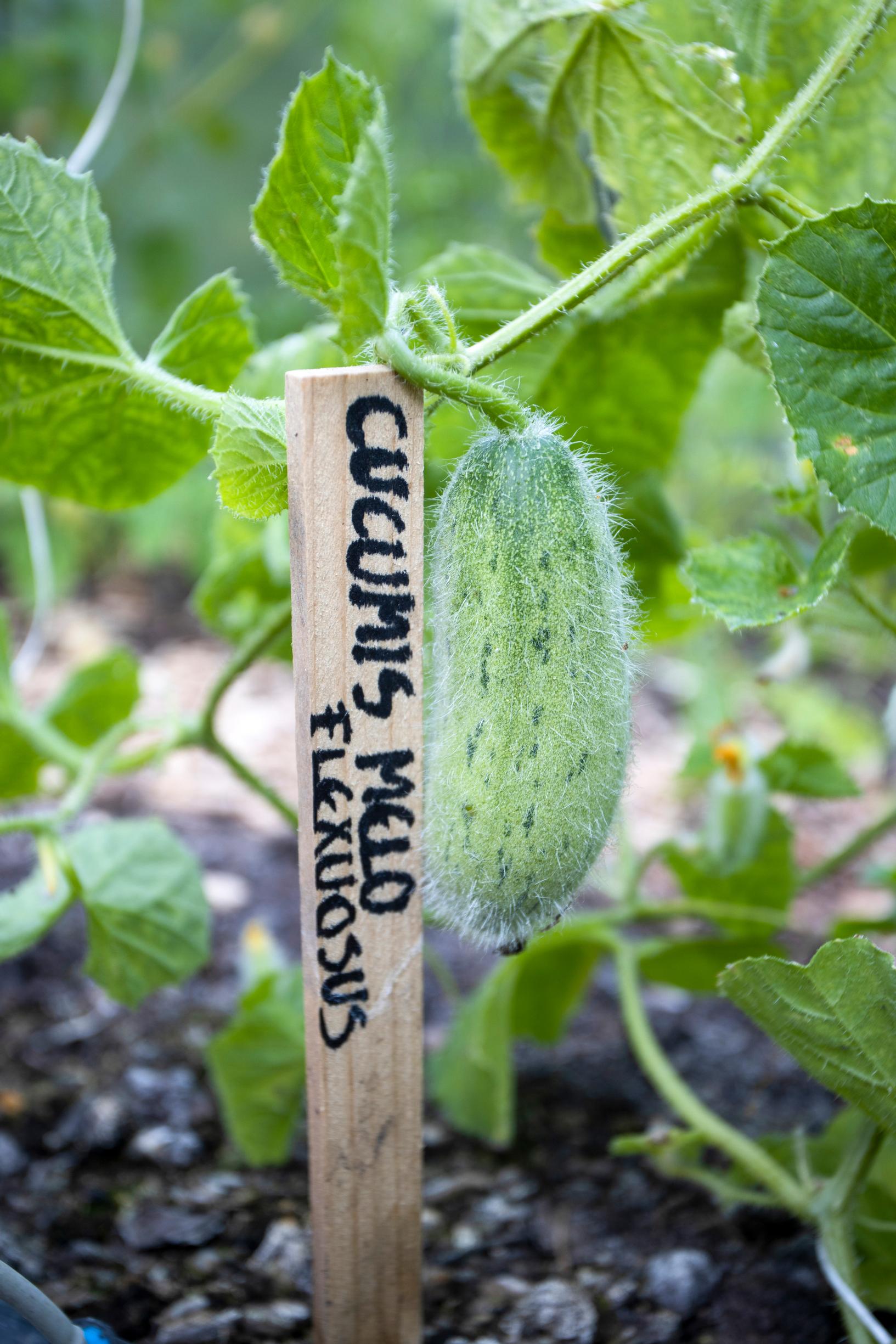
Among the newest projects in the garden are the newly dug pond and stream, which Outi and Nalle plan to plant with bulrush, calamus, watercress, and other edible aquatic plants. They’ve named the pond Olavi’s Spring, after the St. Olav pilgrimage route that passes by the garden.
These sheltered spots in the garden are designed to be places where visitors can pause to catch their breath after the guided tour, and take in the plant life and the peaceful atmosphere of the yard.
“It’s important for both of us to be able to stop, ground ourselves, and be fully present in the moment. We hope our visitors can experience the same feeling,” Outi says.
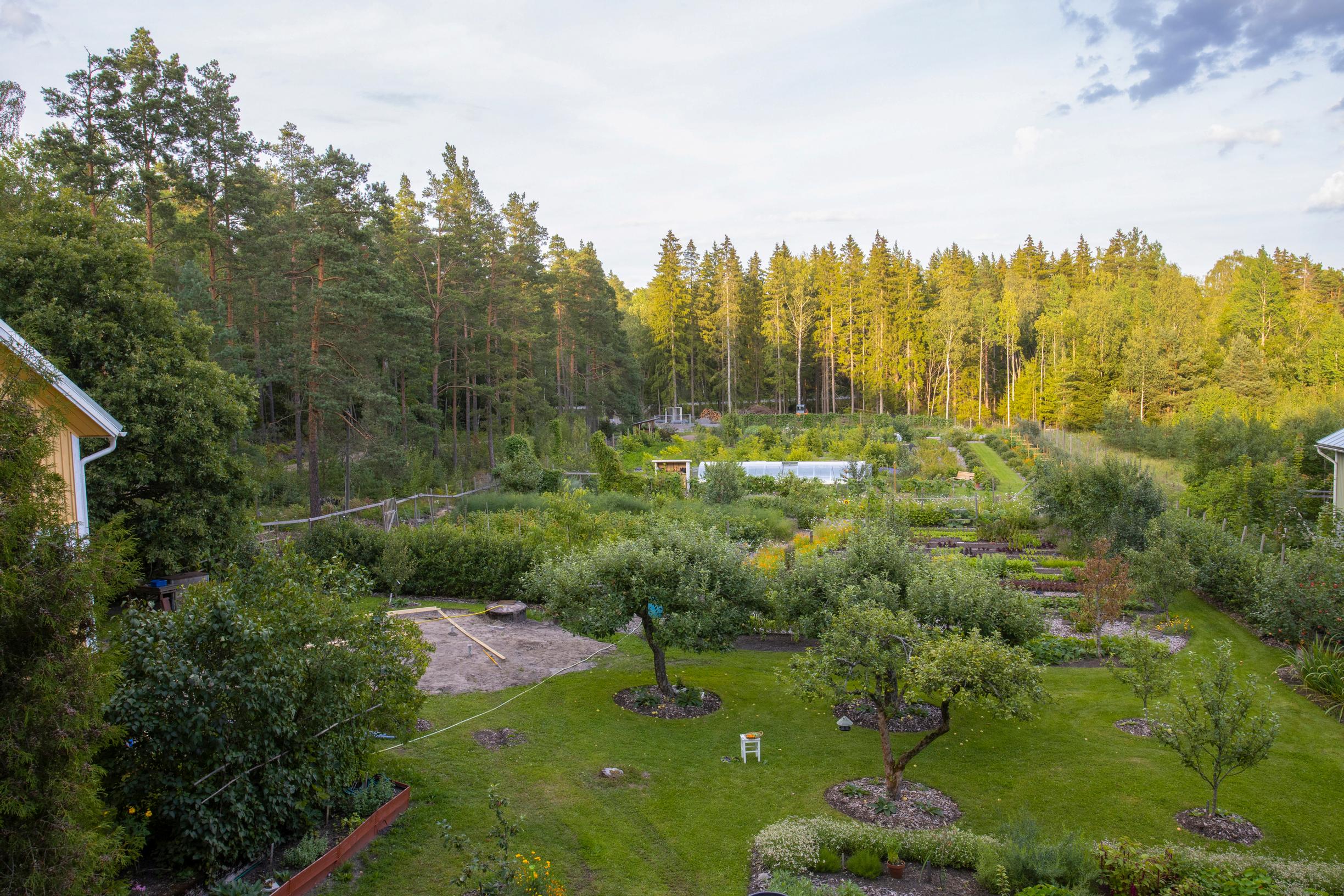
More information about the garden: nodig.fi


